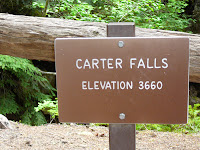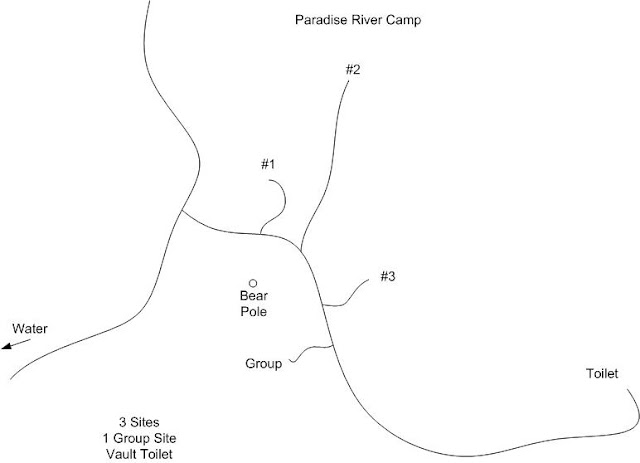 |
| Immature Nurse Log |
To tell you the truth, the leg between Cougar Rock and Longmire is pretty boring. It's a nice, easy hike down a gentle slope through a temperate rain forest. So, when I stumbled across a nurse log, I couldn't help but expound.
After a tree dies and falls over, it begins to decay. It becomes a home for insects, critters, mosses, plants and eventually, other trees. As the wood rots, the nutrients are consumed by other organisms and it becomes the nurse for the new generation; hence the term nurse log.
As you can see from the picture, seeds of trees begin to grow on nurse logs, their roots initially growing through the cracks in the wood, and eventually growing into the decayed log. In a tropical rain forest, a tree may decay in 18 months, however in the Pacific Northwest, it takes decades. By then, the trees growing in the log are beginning to mature.
In fact, if you look carefully in a mature forest, you can see the remains of a nurse log by looking at the spacing of the mature trees. If you find a number of trees roughly in a line, you can bet that they began their lives in a nurse log.
 |
| Future Nurse Log |
 |
| Mature Nurse Log |

 Although I am no expert in flowers, I did find a handout from the Park Service that did a very good job of identifying the flowers of Sunrise. The pamphlet "Subalpine Wildflowers" contains many color pictures about many more flowers than we saw that day.
Although I am no expert in flowers, I did find a handout from the Park Service that did a very good job of identifying the flowers of Sunrise. The pamphlet "Subalpine Wildflowers" contains many color pictures about many more flowers than we saw that day. 













































